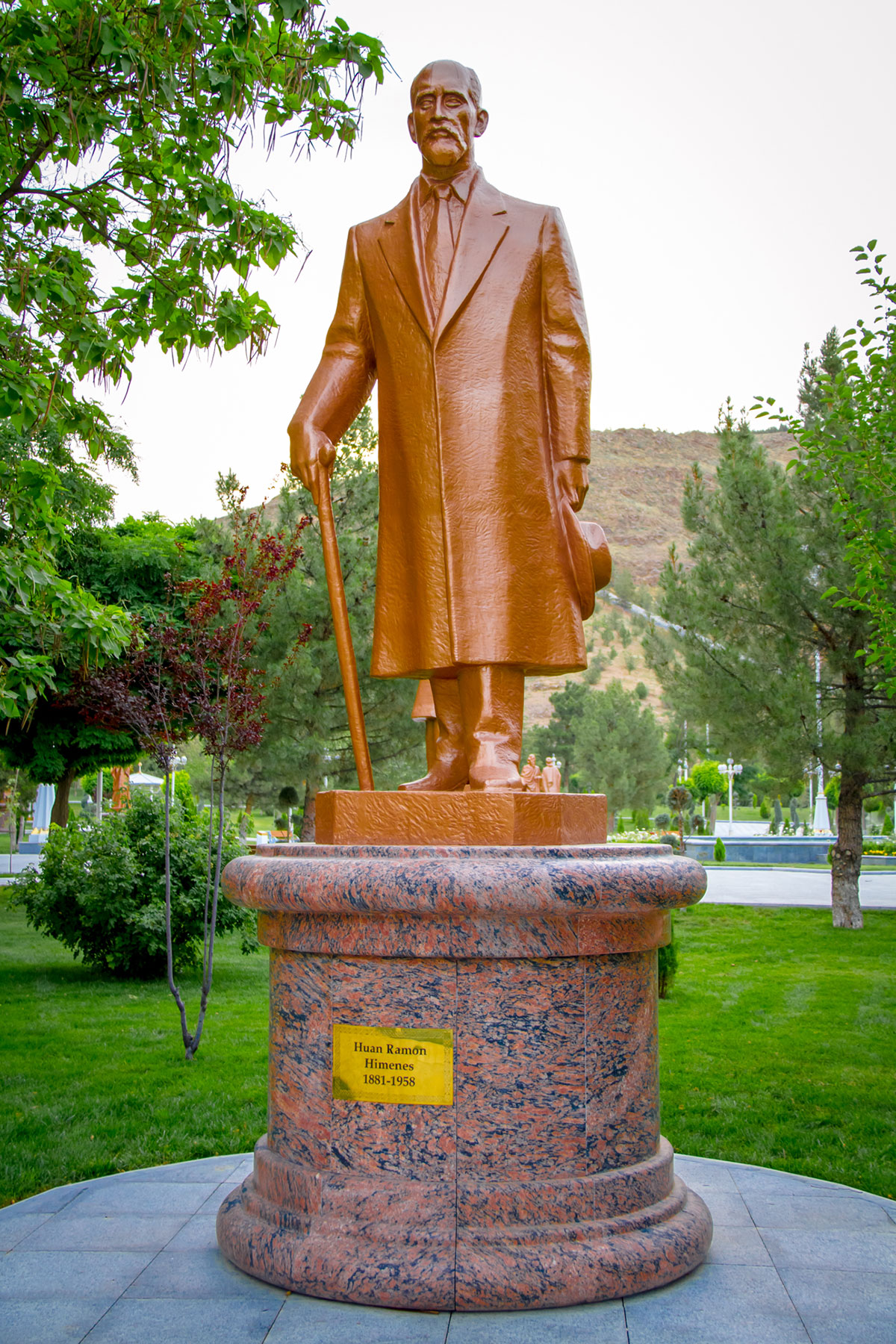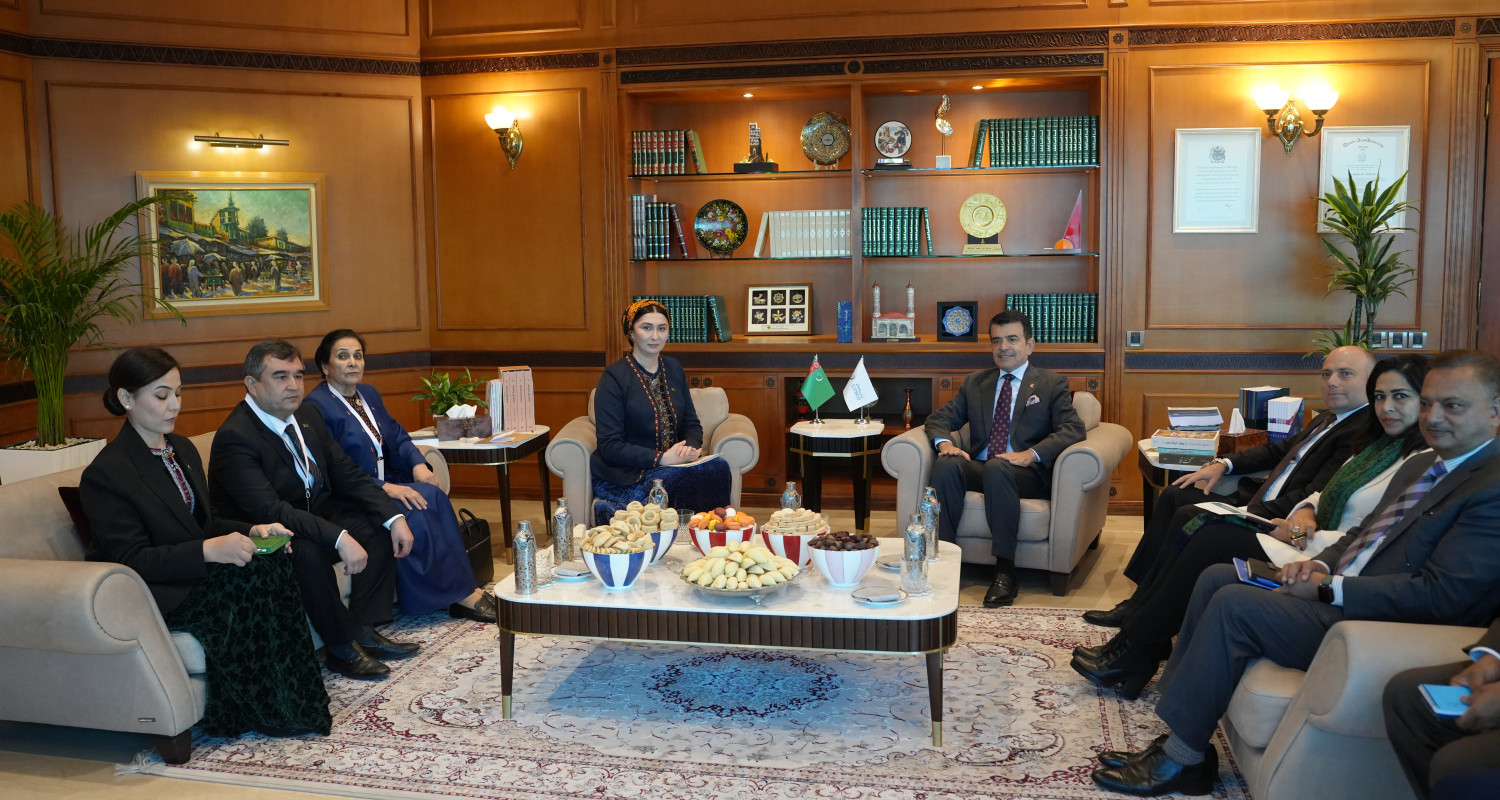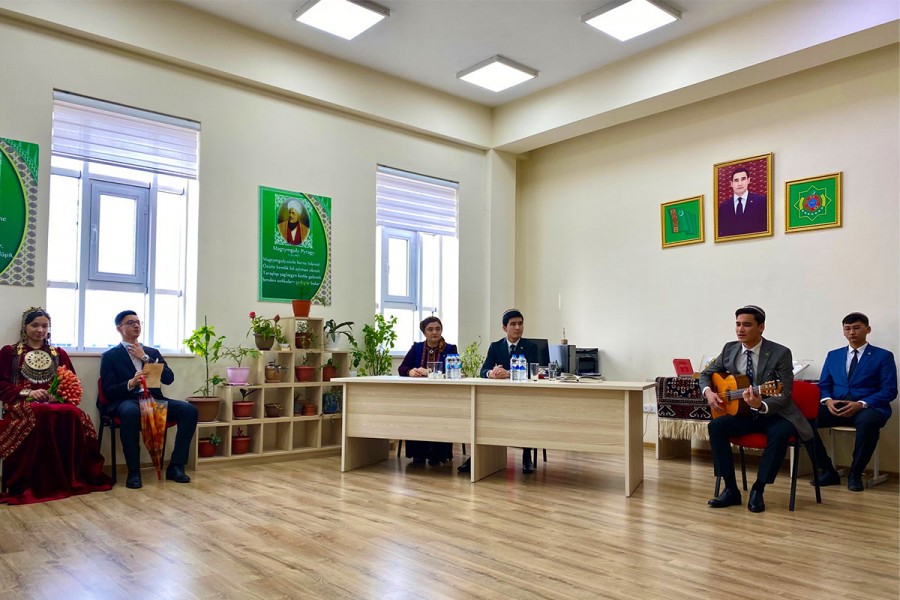This year, in a solemn ceremony to commemorate the 300th anniversary of the birth of the classic of Turkmen literature Magtymguly Fragi and a new cultural and park complex of the capital was opened in his honor in the foothills of Kopetdag.
It is symbolic that this large-scale object, in addition to the majestic monument of Magtymguly, includes an alley of famous poets and thinkers from various countries and eras, which emphasizes its importance in the context of friendship of peoples and unity of the cultural heritage of mankind.
There are 24 monuments to world-famous writers and poets from around the world on the territory of the park complex.
The editorial board of the Golden Age considered it right, if possible, to acquaint the reader, especially children and youth, with the life and work of outstanding personalities whose monuments adorn Magtymguly Alley. This is also important because some of the geniuses of their time represented here have visited Turkmenistan. "GA", publishing information about them, does not pretend in any way to the completeness of coverage of materials about a particular person, especially since many of them However, after a long period of time, not much information has been preserved.
Our short story today is about the Spanish poet, one of the best lyricists of his language, the 1956 Nobel Prize winner Juan Ramon Jimenez. Juan Ramon Jimenez was born on December 23, 1881 in the city Moger. He was the youngest in the family. As a child, Juan Ramon was a very dreamy boy, he could admire beautiful things for a long time. He was very fond of looking into a kaleidoscope.
In 1893, he entered the Jesuit College. Three years later, after becoming a bachelor and completing his secondary education, he entered the Faculty of Law of the University of Seville. In 1898 Jimenez dropped out of university and took up poetry. He read the poetry of the French symbolist poets - Baudelaire, Verlaine, Mallarmé.
In 1902, Jimenez initiated the creation of the Spanish literary magazine "Helios" with a modernist orientation. Jimenez traveled to France and the United States, where in 1913 he met the writer, translator Rabindranath Tagore Zenobia Kamprubi, who later became his wife and assistant. The couple first emigrated to Cuba, and then lived in the United States and Puerto Rico. Jimenez taught at the university for a while. In 1956, Jimenez became a laureate Nobel Prize in Literature "For lyrical poetry, an example of high spirit and artistic purity in Spanish poetry." Jimenez died in 1958.
Critics distinguish three stages in Jimenez's work - at the first stage he experienced the influence of the romantic lyrics of Becker, the French symbolism of Baudelaire and Verlaine. In the second stage, he drew inspiration from the works of Blake, Shelley, Emily Dickinson and William Butler Yeats. The third stage of his work was different proximity to spiritual research and the desire for brightness. Jimenez's literary legacy includes the lyrical novel "Platero and I", consisting of short stories about Andalusia, and an essay about contemporary writers "Spaniards of Three Worlds".
About the events in the life of Juan Ramon Jimenez in 2015 , director Antonio Gonzalo shot the feature film "Shining in Time".








